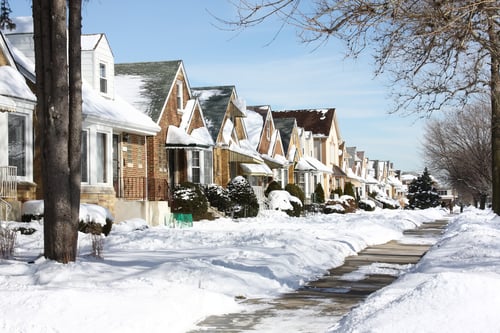In places with cold winters, space heating systems play a fundamental role in buildings. Without them, indoor temperatures would quickly become unsuitable for human occupation. The local climate is one of the most important factors when designing a heating system; If two identical buildings are developed in Miami FL and New York City, the heating load will be much greater for the New York property.
Building heating systems are characterized by a wide range of available configurations. The following are some ways in which the heating system can be classified:
-
By energy source: Some common options are natural gas, heating oil, propane, and electricity. Steam or biomass may also be available.
-
By heat distribution method: Some heating systems release heat directly into the air, while others use water or steam as a heat transfer medium between the heating equipment and indoor areas. There are also radiant heating systems, with hot water pipes or resistance panels built into walls and ceilings.
-
By layout: Some designs use centralized heating equipment for the entire building, while others use a separate installation for each area of the building.
As with all engineering decisions, there is no “best” option when it comes to space heating. Since every building is unique, the ideal space heating setting changes depending on the property. The local climate must also be considered as it influences performance.
Design a building heating system suitable for your climate zone.
Heating system performance during extreme winters
Space heating systems are pushed to their limits during the coldest days of winter, especially when large masses of cold air move from the poles to temperate regions. For example, New York saw winter temperatures below -10°F, while Chicago saw winters below -20°F.
Fuel combustion and electrical resistance have been used for decades as heating methods:
-
Combustion-based heating systems have a lower operating cost but produce greenhouse gas emissions. Note that even biomass heaters release emissions.
-
Electric resistance heaters are emission-free, but their operating cost is very high, especially if you live in a place with cold winters.
Electric heat pumps are a more modern option: they offer clean operation just like resistance heaters, but have comparable operating costs to combustion heaters. A heat pump can be viewed as a refrigerator or air conditioner operating in reverse:
-
Just as an air conditioner removes indoor heat by evaporating and compressing refrigerant, a heat pump can extract thermal energy from outdoor air.
-
Air source heat pumps extract heat from outside air.
-
Geothermal heat pumps extract heat from underground.
Air source heat pumps have an important limitation in extreme cold: their efficiency drops with the temperature, and they are as inefficient as a resistance heater when the outside temperature drops below the freezing point of water (32°F). At this point, the heat pump may simply not be able to produce enough heat for its indoor area. Another challenge is preventing ice from accumulating on the exterior components of heat pumps – some models are equipped with a defrost system that removes ice at regular intervals.

Geothermal heat pumps can work efficiently during cold weather, but they come at a higher price. The main challenge when installing these heat pumps is burying the water circuit that collects heat underground. Installation can be especially difficult if the building is in a busy urban center without direct access to the ground.
Combustion heaters and resistance heaters do not suffer loss of performance during cold weather as long as their energy input is available. However, please note that combustion heaters may experience fuel starvation in some cases:
-
If the heating system relies on fuel delivered by truck, the supply may be interrupted in extreme weather conditions.
-
Natural gas heaters are served by an underground piping system, making them the most reliable option.
Upgrading a Heat Pump with a Backup Heating System
When air source heat pumps are used in locations with very cold winters, a common solution is to add combustion heating or resistance heating as a backup. This configuration is called a hybrid heating system.
-
When outdoor temperatures are within the ideal range for the heat pump, the building owner can take advantage of its superior efficiency.
-
If the temperature is too low for the heat pump alone, the backup heating system is activated.
A heat pump with a backup gas heater achieves the lowest operating cost, but is also the most expensive option because two power sources must be installed. On the other hand, a heat pump with backup resistance heating is more affordable because there is only one energy source – the downside is having a very high electricity bill during the colder winter months.
To obtain an ideal heating system configuration for your building, the best recommendation is to contact a qualified MEP engineering company. Professional engineers are highly familiar with local building codes and can design a high-performance facility while obtaining rapid project approval from local authorities.

